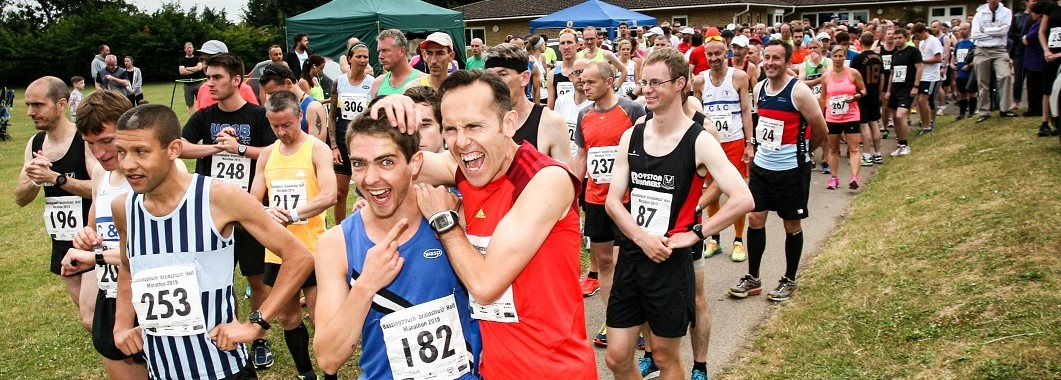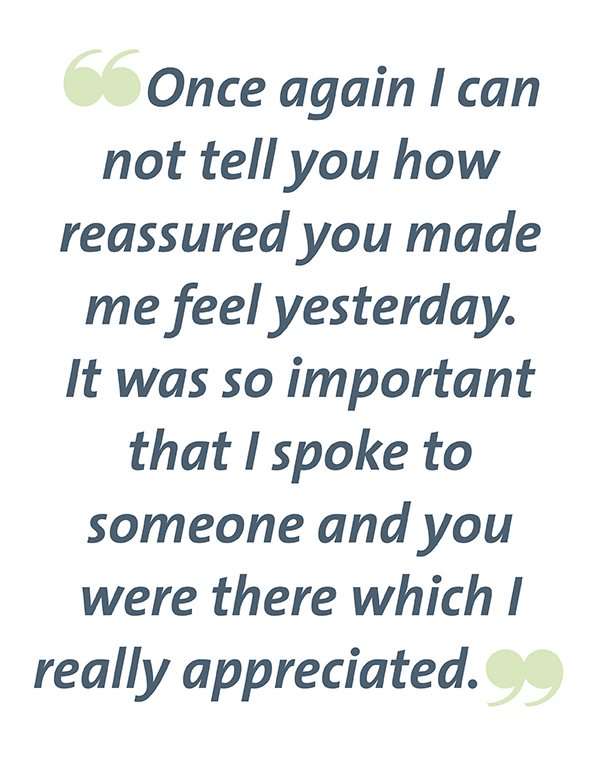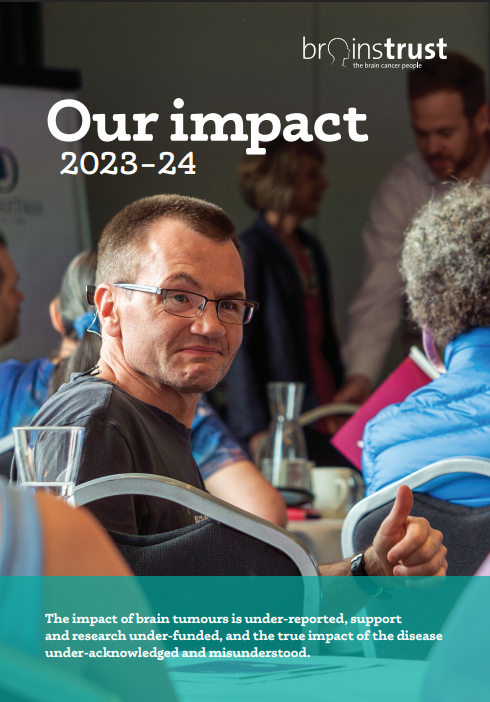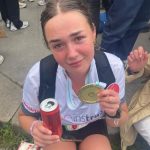
brainstrust Bass Belle 10 miler 2024 entry list
Race registrations
The registration list is updated twice weekly.Click here to go back to the event home page.
| Race number | First name | Last name | Club | ||||||||||||
|---|---|---|---|---|---|---|---|---|---|---|---|---|---|---|---|
| 1 | Jane | Allton | Steeple Chasers Running & Cycling Club | ||||||||||||
| 2 | Stuart | Goodwin | Biggleswade Athletics Club | ||||||||||||
| 3 | Neal | Groves | Bishops Stortford Running Club | ||||||||||||
| 4 | Katrina | Dobson | Ware Joggers | ||||||||||||
| 5 | Lottie | Butler-Henderson | |||||||||||||
| 6 | Ellie | Bithell | Newmarket Joggers | ||||||||||||
| 7 | Andy | Fryatt | Newmarket Joggers | ||||||||||||
| 8 | Mike | Grant | Bishops Stortford Running Club | ||||||||||||
| 9 | Feridun | Kadir | Bishops Stortford Running Club | ||||||||||||
| 10 | Susan | Hunter | Shefford Runners | ||||||||||||
| 11 | Lizzie | Tait | Bishops Stortford Running Club | ||||||||||||
| 12 | Melanie | Staley | |||||||||||||
| 13 | Paul | Malone | Bishops Stortford Running Club | ||||||||||||
| 14 | Jane | Malone | Bishops Stortford Running Club | ||||||||||||
| 15 | Georgina | Thorpe | Running Events Cambridgeshire | ||||||||||||
| 16 | Tom | Elton | Newmarket Joggers | ||||||||||||
| 17 | Jilly | Palmer | Bishops Stortford Running Club | ||||||||||||
| 18 | Paul | Roberts | |||||||||||||
| 19 | Amanda | Peacock | St Neots Riverside Runners | ||||||||||||
| 20 | Theresa | Burke | Bishops Stortford Running Club | ||||||||||||
| 21 | Mel | Wilkinson | |||||||||||||
| 22 | Kez | Latham | |||||||||||||
| 23 | Tracey | Wells | |||||||||||||
| 24 | Crispin | Wells | Royston Runners | ||||||||||||
| 25 | Sarah | Redsell | |||||||||||||
| 26 | Fergus | McAuliffe | Royston Runners | ||||||||||||
| 27 | Kevin | Foskett | Royston Runners | ||||||||||||
| 28 | Adam | Johnson | |||||||||||||
| 29 | Rebecca | Howard | Team Bright Hammer | ||||||||||||
| 30 | Jennifer | Smith | Cambridge & Coleridge Athletics Club | ||||||||||||
| 31 | Serena | Beresford | Bishops Stortford Running Club | ||||||||||||
| 32 | Nick | Wood | Meridian Tri Club | ||||||||||||
| 33 | Amanda | Wood | |||||||||||||
| 34 | Owen | Wood | |||||||||||||
| 35 | Gemma | Stanford | |||||||||||||
| 36 | Simon | Ntege | |||||||||||||
| 37 | Alice | Tellett | St Neots Riverside Runners | ||||||||||||
| 38 | Ryan | Wakefield | Cambridge & Coleridge Athletics Club | ||||||||||||
| 39 | David | Cran | |||||||||||||
| 40 | Claire | Rooney | Saffron Striders Running Club | ||||||||||||
| 41 | Lyn | Hudson | Saffron Striders Running Club | ||||||||||||
| 42 | Jon | Norton | |||||||||||||
| 43 | Andrew | Pettit | |||||||||||||
| 44 | Alex | Thompson | Saffron Striders Running Club | ||||||||||||
| 45 | Andy | Denyer | |||||||||||||
| 46 | Dean | Feasey | |||||||||||||
| 47 | Peter | Boast | |||||||||||||
| 48 | Martin | Green | St Neots Riverside Runners | ||||||||||||
| 49 | Beth | Moorley | Royston Runners | ||||||||||||
| 50 | Anne | Schumann | |||||||||||||
| 51 | Charleen | Tillotson | Harlow Running & Tri Club | ||||||||||||
| 52 | Marc | Bishara | Lonely Goat Running Club | ||||||||||||
| 53 | Matthew | Stanford | |||||||||||||
| 54 | Dionne | Jones | Harlow Running & Tri Club | ||||||||||||
| 55 | Eddie | Bowers | Walden Tri | ||||||||||||
| 56 | Caitlin | Evans | Stevenage Phoenix | ||||||||||||
| 57 | Nicholas | West | Stevenage Phoenix | ||||||||||||
| 58 | Conor | O’Neill | Stevenage Phoenix | ||||||||||||
| 59 | Wendy | Hunt | Harlow Running & Tri Club | ||||||||||||
| 60 | Sue | Reilly | Harlow Running & Tri Club | ||||||||||||
| 61 | Paul | Wright | |||||||||||||
| 62 | Julie | Stringer | Fetch Everyone Running Club | ||||||||||||
| 63 | Emma | Hodson | Cambridge University Hare & Hounds | ||||||||||||
| 64 | Cerys | Bithell | Newmarket Joggers | ||||||||||||
| 65 | Laura | Steed | St Neots Riverside Runners | ||||||||||||
| 66 | Grant | Alabaster | Bishops Stortford Running Club | ||||||||||||
| 67 | Anna | Eddery | Walden Tri | ||||||||||||
| 68 | Simon | Brown | Meridian Tri | ||||||||||||
| 69 | Jen | Garrett | |||||||||||||
| 70 | Jamie | Garrett | |||||||||||||
| 71 | Luke | Healy | Harlow Running & Tri Club | ||||||||||||
| 72 | Simon | Boast | Marlborough Running Club | ||||||||||||
| 73 | Veronica | Kent Bodell | St Albans Striders | ||||||||||||
| 74 | Barry | Parker | |||||||||||||
| 75 | Emma | Koppe | Meridian Tri Club | ||||||||||||
| 76 | Shirley | Swanson | Steeple Chasers Running & Cycling Club | ||||||||||||
| 77 | Terry | Sawyer | Fairlands Valley Spartans | ||||||||||||
| 78 | Murray | Heal | |||||||||||||
| 79 | Arran | Heal | Meridian Tri Club | ||||||||||||
| 80 | Lisa | Heal | Meridian Tri Club | ||||||||||||
| 81 | Katherine | Probert | Meridian Tri Club | ||||||||||||
| 82 | Clare | Arnott | |||||||||||||
| 83 | Sarah | Medley | |||||||||||||
| 84 | Elizabeth | Noble | |||||||||||||
| 85 | Julie | Pederson | |||||||||||||
| 86 | Lisa | Hazell | Pottsands | ||||||||||||
| 87 | Gail | Cartmell | Meridian Tri Club | ||||||||||||
| 88 | Natalie | Smith | |||||||||||||
| 89 | Lewis | Wood | |||||||||||||
| 90 | Liam | Butler | Royston Runners | ||||||||||||
| 91 | Tamsin | Cromwell | Royston Runners | ||||||||||||
| 92 | Toby | Pilcher | Royston Runners | ||||||||||||
| 93 | Katheyrn | Ayres | |||||||||||||
| 94 | Brian | O’Connor | Cambridge & Coleridge Athletics Club | ||||||||||||
| 95 | Caspar | Alliott | |||||||||||||
| 96 | Chris | Alliott | |||||||||||||
| 97 | Guy | Parker | Bath University Men’s Running Society | ||||||||||||
| 98 | Jenny | Klaassen | Royston Runners | ||||||||||||
| 99 | Sharon | Saunders | Steeple Chasers Running & Cycling Club | ||||||||||||
| 100 | Melissa | O’Hara | Trent Park Running Club | ||||||||||||
| 101 | Selina | Walkley | Bishops Stortford Running Club | ||||||||||||
| 102 | Simon | Ward | St Neots Riverside Runners | ||||||||||||
| 103 | Sue | Cross | Trent Park Running Club | ||||||||||||
| 104 | Susan | Thomas | Trent Park Running Club | ||||||||||||
| 105 | Nick | Wainwright | |||||||||||||
| 106 | Joanne | Roberts | |||||||||||||
| 107 | Jo | Lyness | Royston Runners | ||||||||||||
| 108 | Robbie | Filby | |||||||||||||
| 109 | Nick | Filby | |||||||||||||
| 110 | Tina | Filby | Meridian Tri Club | ||||||||||||
| 111 | Rebecca | Howling | |||||||||||||
| 112 | Sarah | Smith | Bishops Stortford Running Club | ||||||||||||
| 113 | Daniel | Pike | |||||||||||||
| 114 | Frank | Pike | |||||||||||||
| 115 | Joanna | Jones | Wimpole Runners | ||||||||||||
| 116 | Chris | Harbron | Garden City Runners | ||||||||||||
| 117 | Alan | Gordon | |||||||||||||
| 118 | Hannah | Stephenson | Steeple Chasers Running & Cycling Club | ||||||||||||
| 119 | Keith | Yexley | Steeple Chasers Running & Cycling Club | ||||||||||||
| 120 | Peter | Calvert | |||||||||||||
| 121 | Paul | Cocklin | Ware Joggers | ||||||||||||
| 122 | Jack | Cammish | |||||||||||||
| 123 | Emma | Harris | |||||||||||||
| 124 | Claudia | Canova | Trent Park Running Club | ||||||||||||
| 125 | Robert | King | Meridian Tri Club | ||||||||||||
| 126 | Maurice | Hemingway | St Neots Riverside Runners | ||||||||||||
| 127 | Chris | Dowsett | St Neots Riverside Runners | ||||||||||||
| 128 | Craig | Losh | St Neots Riverside Runners | ||||||||||||
| 129 | Alan | Taylor | Ware Joggers | ||||||||||||
| 130 | Vikki | Evans | |||||||||||||
| 131 | Joshua | White | Meridian Tri Club | ||||||||||||
| 132 | Paul | Brennan | Ware Joggers | ||||||||||||
| 133 | Tracy | Brennan | Ware Joggers | ||||||||||||
| 134 | Colin | Naman | Ware Joggers | ||||||||||||
| 135 | Nick | Samson | |||||||||||||
| 136 | Caroline | Stephens | Ware Joggers | ||||||||||||
| 137 | Nick | Axam | Ware Joggers | ||||||||||||
| 138 | Rosalind | Hitchen | Ware Joggers | ||||||||||||
| 139 | Beverley | McLees | Ware Joggers | ||||||||||||
| 140 | Pamela | Wilson | Ware Joggers | ||||||||||||
| 141 | Matthew | Cummings | Ware Joggers | ||||||||||||
| 142 | Gemma | Charville | Ware Joggers | ||||||||||||
| 143 | Philip | Earle | Ware Joggers | ||||||||||||
| 144 | Rosemary | Bains | Hi Runners | ||||||||||||
| 145 | David | White | Meridian Tri Club | ||||||||||||
| 146 | Liz | White | Meridian Tri Club | ||||||||||||
| 147 | Paul | Holley | Newmarket Joggers | ||||||||||||
| 148 | Paul | Walker | Bishops Stortford Running Club | ||||||||||||
| 149 | Mark | Tilley | Ware Joggers | ||||||||||||
| 150 | Nicola | Tilley | Ware Joggers | ||||||||||||
| 151 | Clive | Smith | Ware Joggers | ||||||||||||
| 152 | Claire | Grimmer | |||||||||||||
| 153 | Melissa | Benson | Royston Runners | ||||||||||||
| 154 | Madhuri | Bolton | Royston Runners | ||||||||||||
| 155 | Adam | Wallace | Ware Joggers | ||||||||||||
| 156 | Shu | Pillinger | Ware Joggers | ||||||||||||
| 157 | Charlie | Bryan | |||||||||||||
| 158 | Fiona | Alder | Ware Joggers | ||||||||||||
| 159 | Jeanette | Collins | Ware Joggers | ||||||||||||
| 160 | Olu | Gooden | Ware Joggers | ||||||||||||
| 161 | Paul | Phillips | |||||||||||||
| 162 | Emma | Bryant | |||||||||||||
| 163 | Christy | Van Maanenberg | Ware Joggers | ||||||||||||
| 164 | Timothy | Brignall | Ware Joggers | ||||||||||||
| 165 | Tony | Pyle | |||||||||||||
| 166 | Shane | McAndrew | Newmarket Joggers | ||||||||||||
| 167 | Jonathan | Ollington | Newmarket Joggers | ||||||||||||
| 168 | James | Bone | Bath University Men’s Running Society | ||||||||||||
| 169 | Chris | Morgan | |||||||||||||
| 170 | Gareth | White | Bubble Works Running Community | ||||||||||||
| 171 | Jemina | Punni | Ware Joggers | ||||||||||||
| 172 | Sara | McGowan | Royston Runners | ||||||||||||
| 173 | Mike | Connoly | Bishops Stortford Running Club | ||||||||||||
| 174 | Colm | Reddington | |||||||||||||
| 175 | Jo | Capewell | |||||||||||||
| 176 | Tara | Gibbons | Steeple Chasers Running & Cycling Club | ||||||||||||
| 177 | Jamie | Armstrong | |||||||||||||
| 178 | Kate | Van Dort | Hi Runners | ||||||||||||
| 179 | Hannah | Deeks | |||||||||||||
| 180 | Rachel | Canning | |||||||||||||
| 181 | John | Kemp | |||||||||||||
| 182 | Lynsay | Evans | Ware Joggers | ||||||||||||
| 183 | Michelle | Cross | Ware Joggers | ||||||||||||
| 184 | Sidney | Brown | |||||||||||||
| 185 | Chloe | Christine Wallis | |||||||||||||
| 186 | Aimee | Clark | |||||||||||||
| 187 | Charlie | Gibbs | Walden Tri | ||||||||||||
| 188 | Michelle | Hawker | Royston Runners | ||||||||||||
| 189 | Joanne | Gladding | Ware Joggers | ||||||||||||
| 190 | Anthea | Francis | Ware Joggers | ||||||||||||
| 191 | Cate | Campany | Ware Joggers | ||||||||||||
| 192 | Kathyrn | Hunt | |||||||||||||
| 193 | Emma | Raymen | |||||||||||||
| 194 | Natalie | Moat | Royston Runners | ||||||||||||
| 195 | Paula | Gollop | Ware Joggers | ||||||||||||
| 196 | Deborah | Jackson | Shefford Runners | ||||||||||||
| 197 | Laura | Henderson | |||||||||||||
| 198 | Lluis | Borrell | |||||||||||||
| 199 | Pete | Thornton | |||||||||||||
| 200 | Liam | Reilly | |||||||||||||
| 201 | Dean | Butcher | |||||||||||||
| 202 | Janet | Readitt | Ware Joggers | ||||||||||||
| 203 | Mark | Sanz | Ware Joggers | ||||||||||||
| 204 | Katherine | Hesketh | St Neots Riverside Runners | ||||||||||||
| 205 | Cathryn | Woodward | |||||||||||||
| 206 | Yumiko | Carter | |||||||||||||
| 207 | Nadine | Clemo | |||||||||||||
| 208 | Emma | Stracey | |||||||||||||
| 209 | Rebecca | Thomas | |||||||||||||
| 210 | Joseph | Philip | Cambridge & Coleridge Athletics Club | ||||||||||||
| 211 | Laura | Herd | |||||||||||||
| 212 | Gio | Tamburello | Royston Runners | ||||||||||||
| 213 | Geoff | Webb | |||||||||||||
| 214 | Jessica | Stewart | Meridian Tri Club | ||||||||||||
| 215 | James | Harvey | Bishops Stortford Running Club | ||||||||||||
| 216 | Chris | Bennett | Bishops Stortford Running Club | ||||||||||||
| 217 | Simon | Joyce | Ware Joggers | ||||||||||||
| 218 | Sian | Coakes | |||||||||||||
| 219 | Sarah | Berry | Ware Joggers | ||||||||||||
| 220 | Joanne | Robinson | Alchemy | ||||||||||||
| 221 | David | Watkins | |||||||||||||
| 222 | Chris | Parson | Huntingdonshire AC | ||||||||||||
| 223 | Matthew | Stephens | Ware Joggers | ||||||||||||
| 224 | Mark | Holland | Bishops Stortford Running Club | ||||||||||||
| 225 | James | Ebsworth | Harlow Running & Tri Club | ||||||||||||
| 226 | Jennifer | Evans | Ware Joggers | ||||||||||||
| 227 | Frances | Iwaschkin | Bishops Stortford Running Club | ||||||||||||
| 228 | Fiona | Smith | Ware Joggers | ||||||||||||
| 229 | Lydia | Everatt | |||||||||||||
| 230 | Jonathon | Hawkins | Shefford Runners | ||||||||||||
| 231 | Kelly | Gearing | Shefford Runners | ||||||||||||
| 232 | Josie | Blackie | Shefford Runners | ||||||||||||
| 233 | Adam | Thomas | Royston Runners | ||||||||||||
| 234 | Eloise | Button | |||||||||||||
| 235 | Ben | Taylor | St Neots Riverside Runners | ||||||||||||
| 236 | Katy | Bellerby | Bishops Stortford Running Club | ||||||||||||
| 237 | Christina | Tungatt | Ware Joggers | ||||||||||||
| 238 | Kate | French | |||||||||||||
| 239 | Nicholas | Fiducia | Royston Runners | ||||||||||||
| 240 | Robin | Brouard | |||||||||||||
| 241 | Amanda | Dionisyou | Hitchin Hares | ||||||||||||
| 242 | Elise | Farzam | |||||||||||||
| 243 | John | Sunerton | Royston Runners | ||||||||||||
| 244 | Chris | McInerney | Royston Runners | ||||||||||||
| 245 | Greg | Barker | Running Events Cambridgeshire | ||||||||||||
| 246 | Andrew | Wilson | Bishops Stortford Running Club | ||||||||||||
| 247 | James | Randall | Ware Joggers | ||||||||||||
| 248 | Amanda | Smith | |||||||||||||
| 249 | Adrian | Peirson | |||||||||||||
| 250 | Mark | Hayward | Newmarket Joggers | ||||||||||||
| 251 | Charlotte | Chappell | |||||||||||||
| 252 | Jan | Steuber | |||||||||||||
| 253 | Robert | Shaw | Saffron Striders Running Club | ||||||||||||
| 254 | Isobel | Rawlinson | |||||||||||||
| 255 | Claire | Puzzar | Meridian Tri Club | ||||||||||||
| 256 | David | Weston | North Herts Road Runners | ||||||||||||
| 257 | Ryan | Smith | Harlow Running & Tri Club | ||||||||||||
| 258 | Tyana | Down | |||||||||||||
| 259 | Paul | Evans | Royston Runners | ||||||||||||
| 260 | Thomas | Perry | Royston Runners | ||||||||||||
| 261 | Kylie | De Jager | |||||||||||||
| 262 | Joanna | Hughes | |||||||||||||
| 263 | Flynn | Stewart | |||||||||||||
| 264 | Sue | Taylor | Ware Joggers | ||||||||||||
| 265 | Francesca | Chesters | |||||||||||||
| 266 | Gary | Reader | St Neots Riverside Runners | ||||||||||||
| 267 | Cevyn | Smith | |||||||||||||
| 268 | Alex | Campbell | |||||||||||||
| 269 | Matt | Banham | Walden Tri | ||||||||||||
| 270 | Stuart | Davidson | Walden Tri | ||||||||||||
| 271 | Jonathan | Tripp | Lonely Goat Running Club | ||||||||||||
| 272 | Siobhan | Palmer | Hitchin Hares | ||||||||||||
| 273 | James | Sleat | |||||||||||||
| 274 | Laura | Loveday | Bishops Stortford Running Club | ||||||||||||
| 275 | Chris | Ball | Shefford Runners | ||||||||||||
| 276 | Emily | Symington | |||||||||||||
| 277 | Sam | Plumb | |||||||||||||
| 278 | Brian | Bowie | Trent Park Running Club | ||||||||||||
| 279 | Joanna | Makowska | St Neots Riverside Runners | ||||||||||||
| 280 | Peter | Williams | Royston Runners | ||||||||||||
| 281 | Louise | Kingsley | |||||||||||||
| 282 | Adam | Day | |||||||||||||
| 283 | Greg | Mellor | |||||||||||||
| 284 | Martin | Kingsley | |||||||||||||
| 285 | Lauren | Bell | Team Cresset | ||||||||||||
| 286 | Simon | Dawson | Team Cresset | ||||||||||||
| 287 | Rosie | Penford | Team Cresset | ||||||||||||
| 288 | Alice | Newling | |||||||||||||
| 289 | Stuart | Ray | |||||||||||||
| 290 | Chris | Main | Huntingdonshire AC | ||||||||||||
| 291 | Tom | Webb | ROC Stars | ||||||||||||
| 292 | Yus | Smith | ROC Stars | ||||||||||||
| 293 | Grace | Williams | Hitchin Hares | ||||||||||||
| 294 | Jon | Warwick | |||||||||||||
| 295 | Findlay | Livingstone | |||||||||||||
| 296 | Jacob | West | Royston Runners | ||||||||||||
| 297 | Marie | Le Novere | |||||||||||||
| 298 | Nicolas | Gambardella | |||||||||||||
| 299 | Jane | Munro | Hi Runners | ||||||||||||
| 300 | Natalie | Herbert | Grange Farm & Dunmow Runners | ||||||||||||
| 301 | Neil | Pollard | Newmarket Joggers | ||||||||||||
| 302 | Hannah | Pollard | Newmarket Joggers | ||||||||||||
| 303 | Sasha | Vail | Walden Tri | ||||||||||||
| 304 | Paul | Jones | Lonely Goat Running Club | ||||||||||||
| 305 | Tom | Pinney | Shefford Runners | ||||||||||||
| 306 | Kasia | Kotulska | Royston Runners | ||||||||||||
| 307 | Alex | Soady | Harlow Running & Tri Club | ||||||||||||
| 308 | Ian | Jarvis | Saffron Striders Running Club | ||||||||||||
| 309 | James | Moore | |||||||||||||
| 310 | Alan | Oliver | Hitchin Hares | ||||||||||||
| 311 | Chiyomi | Ishadi | TPM | ||||||||||||
| 312 | James | Stannard | |||||||||||||
| 313 | Jason | Fox | Harlow Running & Tri Club | ||||||||||||
| 314 | James | Baston-Pitt | |||||||||||||
| 315 | Jessie | Munton | |||||||||||||
| 316 | Alison | Wilkinson | Shefford Runners | ||||||||||||
| 317 | Jake | Sarter | |||||||||||||
| 318 | Helen | Rhodes | Royston Runners | ||||||||||||
| 319 | David | Carter | Royston Runners | ||||||||||||
| 320 | Archie | Fletcher | |||||||||||||
| 321 | Robin | Wells | Royston Runners | ||||||||||||
| 322 | Kasturi | Shah | |||||||||||||
| 323 | Georgina | Quayle | Cambridge & Coleridge Athletics Club | ||||||||||||
| 324 | Carina | Quayle | North Herts Road Runners | ||||||||||||
| 325 | Ian | Devlin | Bubble Works Running Community | ||||||||||||
| 326 | Phil | Cotterill | |||||||||||||
| 327 | Adam | Watson | Ware Joggers | ||||||||||||
| 328 | Edward | Whybrow | Meridian Tri Club | ||||||||||||
| 329 | Laura | Dilley | Freedom Tri | ||||||||||||
| 330 | Debbie | Mead | Harlow Running & Tri Club | ||||||||||||
| 331 | Gary | Mead | Harlow Running & Tri Club | ||||||||||||
| 332 | Lauren | Viney | |||||||||||||
| 333 | Kevin | Francis | Ware Joggers | ||||||||||||
| 334 | Chris | Hardie | Pottsands | ||||||||||||
| 335 | Matt | McRandal | Bishops Stortford Running Club | ||||||||||||
| 336 | Laura | Page | Lonely Goat Running Club | ||||||||||||
| 337 | Ness | Springhall | |||||||||||||
| 338 | Gareth | Pitt | Royston Runners | ||||||||||||
| 339 | Russell | Valiant | Cambridge & Coleridge Athletics Club | ||||||||||||
| 340 | Sophie | Horsford | Cambridge & Coleridge Athletics Club | ||||||||||||
| 341 | Amy | Matthews | Stotfold Runners | ||||||||||||
| 342 | Carl | Lane | Stotfold Runners | ||||||||||||
| 343 | Sam | Worrell | Bishops Stortford Running Club | ||||||||||||
| 344 | Tads | Ciecierski- Holmes | Cambridge University Modern Pentathlon Club | ||||||||||||
| 345 | Bibi | DaLacey-Mould | Freedom Tri | ||||||||||||
| 346 | Anne | Henson | Garden City Runners | ||||||||||||
| 347 | Karyna | Manuel | Huntingdonshire Athletics Club | ||||||||||||
| 348 | Paul | Bullen | Freedom Tri | ||||||||||||
| 349 | Joshua | King | |||||||||||||
| 350 | Emily | King | |||||||||||||
| 351 | Nuala | Milbourn | |||||||||||||
| 352 | Donna | Fiddeman | |||||||||||||
| 353 | Kelly | Sizer | Wimpole Runners | ||||||||||||
| 354 | Sarah | Wells | Park Fitness Royston | ||||||||||||
| 355 | Carla | Key | Royston Runners | ||||||||||||
| 356 | Grant | Ramsay | Fairlands Valley Spartans | ||||||||||||
| 357 | Paul | Green | Royston Runners | ||||||||||||
| 358 | Elizabeth | Underwood | |||||||||||||
| 359 | Stuart | Anderton | |||||||||||||
| 360 | Richard | Varney | |||||||||||||
| 361 | Peter | Bennet | Cambridge & Coleridge Athletics Club | ||||||||||||
| 362 | Kevin | Hall | Barkway Bounders | ||||||||||||
| 363 | Andrew | Gibson | Freedom Tri | ||||||||||||
| 364 | Rebecca | Sandison | Hitchin Hares | ||||||||||||
| 365 | Carl | Underwood | |||||||||||||
| 366 | Johanna | Johnston | Shefford Runners | ||||||||||||
| 367 | James | Dalton | North Herts Road Runners | ||||||||||||
| 368 | Brian | Jones | Royston Runners | ||||||||||||
| 369 | Jason | Byrne | Freedom Tri | ||||||||||||
| 370 | James | Gregson | Meridian Tri Club | ||||||||||||
| 371 | Modestas | Mankus | |||||||||||||
| 372 | Michael | Bradley | Saffron Strider Running Club | ||||||||||||
| 373 | Sarah | Rogers | Enfield Chasers | ||||||||||||
| 374 | Cat | Strawbridge | Steeple Chasers Running & Cycling Club | ||||||||||||
| 375 | Anita | Birch | Steeple Chasers Running & Cycling Club | ||||||||||||
| 376 | Jamie | Probyn | Stotfold Runners | ||||||||||||
| 377 | Sarah | Hilton | |||||||||||||
| 378 | Hannah | Ford | |||||||||||||
| 379 | Hannah | Wiseman | |||||||||||||
| 380 | Matt | Brown | Ware Joggers | ||||||||||||
| 381 | Olivia | Jones | |||||||||||||
| 382 | Bode | Hazell | Pottsands | ||||||||||||
| 383 | Chris | Hazell | Pottsands | ||||||||||||
| 384 | Cheryl | Barsdell | Shefford Runners | ||||||||||||
| 385 | Kelly | Crotty | Meridian Tri Club | ||||||||||||
| 386 | Kieran | Butler | |||||||||||||
| 387 | Hayley | Moore | |||||||||||||
| 388 | Fiona | Morgan | St Radegund | ||||||||||||
| 389 | Stephanie | Crotty | Royston Runners | ||||||||||||
| 390 | Gareth | Walker | |||||||||||||
| 391 | Nichola | Walker | Stotfold Runners | ||||||||||||
| 392 | Nichola | Poynter | Wimpole Runners | ||||||||||||
| 393 | Lucy | Winning | Stotfold Runners | ||||||||||||
| 394 | Elizabeth | Riley | Wimpole Runners | ||||||||||||
| 395 | Frances | Boyer | Meridian Tri Club | ||||||||||||
| 396 | Ruth | Nye | Hitchin Hares | ||||||||||||
| 397 | Jonathan | Harnett | |||||||||||||
| 398 | Saffron | Barker | |||||||||||||
| 399 | Tom | Warman | Witham RC | ||||||||||||
| 400 | Sarah | Brigden | Stotfold Runners | ||||||||||||
| 401 | Alan | Hopkins | Stotfold Runners | ||||||||||||
| 402 | Joelle | Carroll – Fitch | Bishops Stortford Running Club | ||||||||||||
| 403 | Vipul | Patel | |||||||||||||
| 404 | David | Clarkson | Stotfold Runners | ||||||||||||
| 405 | Sharon | Castle | Shefford Runners | ||||||||||||
| 406 | Tahlia | Banks | East Midlands University Air Squadron | ||||||||||||
| 407 | Kevin | Sambridge | Ware Joggers | ||||||||||||
| 408 | Daniel | Kirby | |||||||||||||
| 409 | Helen | Hatcher | Royston Runners | ||||||||||||
| 410 | Sam | Moat | |||||||||||||
| 411 | Tamar | Barclay | Nuclear Striders | ||||||||||||
| 412 | Claire | Blanchford | |||||||||||||
| 413 | Emily | Law | Meridian Tri Club | ||||||||||||
| 414 | Anthony | Parry-Jones | |||||||||||||
| 415 | Katy | Woodward | Ware Joggers | ||||||||||||
| 416 | Keith | Phillips | Club Keith | ||||||||||||
| 417 | Paul | Haynes | Royston Runners | ||||||||||||
| 418 | Arran | Grimes | |||||||||||||
| 419 | Ben | Cook | Endure Fitness Freaks | ||||||||||||
| 420 | Kathleen | Feerick | |||||||||||||
| 421 | Joseph | Feerick | |||||||||||||
| 422 | Robyn | Williams | |||||||||||||
| 423 | Owen | Waller | |||||||||||||
| 424 | Ian | Hobson | |||||||||||||
| 425 | Bradley | Whale | |||||||||||||
| 426 | Colin | Barnes | Royston Runners | ||||||||||||
| 427 | Chris | DeCeglie | |||||||||||||
| 428 | Steve | Kinsella | Stevenage Striders | ||||||||||||
| 429 | Sarah | Kinsella | Stevenage Striders | ||||||||||||
| 430 | Jonathan | Shaw | Shefford Runners | ||||||||||||
| 431 | Caradog | Emanuel | C Squad | ||||||||||||
| 432 | Courtney | Bowen | |||||||||||||
| 433 | Adeliene | Koutstaal | Team Johnson Matthey | ||||||||||||
| 434 | Maurits | Van Tol | Team Johnson Matthey | ||||||||||||
| 435 | Naomi | Park | |||||||||||||
| 436 | Gary | Lewis | |||||||||||||
| 437 | Sarah | Almond | |||||||||||||
| 438 | David | Chalcraft | |||||||||||||
| 439 | Richard | Tasker | Meridian Tri Club | ||||||||||||
| 440 | Anna | Greetham | North Herts Road Runners | ||||||||||||
| 441 | Matt | Roberts | North Herts Road Runners | ||||||||||||
| 442 | Emma | Dix | |||||||||||||
| 443 | Steven | Dunkley | |||||||||||||
| 444 | Gemma | Basatemur | |||||||||||||
| 445 | Abigail | Pearce | Warley Woods Pacers Running Club | ||||||||||||
| 446 | Mark | Pearce | Birmingham Running & Triathlon Club | ||||||||||||
| 447 | Neil | Whitaker | BRJ Run & Tri Club | ||||||||||||
| 448 | Kasia | Raciborska | |||||||||||||
| 449 | Grant | Chapman | Royston Runners | ||||||||||||
| 450 | Caroline | Alberti | |||||||||||||
| 451 | Laura | Coulson | Lindley Running Club | ||||||||||||
| 452 | Jonny | McLean | Holmfirth Harriers | ||||||||||||
| 453 | Pippa | Kidd | |||||||||||||
| 454 | Andy | Smith | |||||||||||||
| 455 | Clare | Whybrow | Royston Runners | ||||||||||||
| 456 | Poppy | Norris | Royston Runners | ||||||||||||
| 457 | Alex | Crabb | Higham Harriers | ||||||||||||
| 458 | Robin | Newman | Bishops Stortford Running Club | ||||||||||||
| 459 | Huw | Green | |||||||||||||
| 460 | Callum | Waller | |||||||||||||
| 461 | Keren | Grenall | Harlow Running & Tri Club | ||||||||||||
| 462 | Alex | Grounsell | |||||||||||||
| 463 | Olivia | Butterworth | Royston Runners | ||||||||||||
| 464 | Russ | Hewitt | Bishops Stortford Running Club | ||||||||||||
| 465 | Dean | Reilly | Royston Runners | ||||||||||||
| 466 | Michael | Epstein | Freedom Tri |










